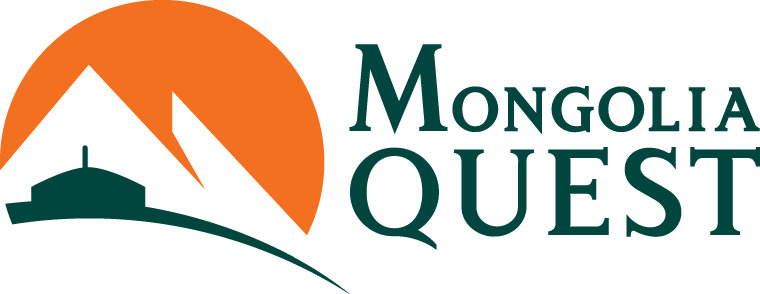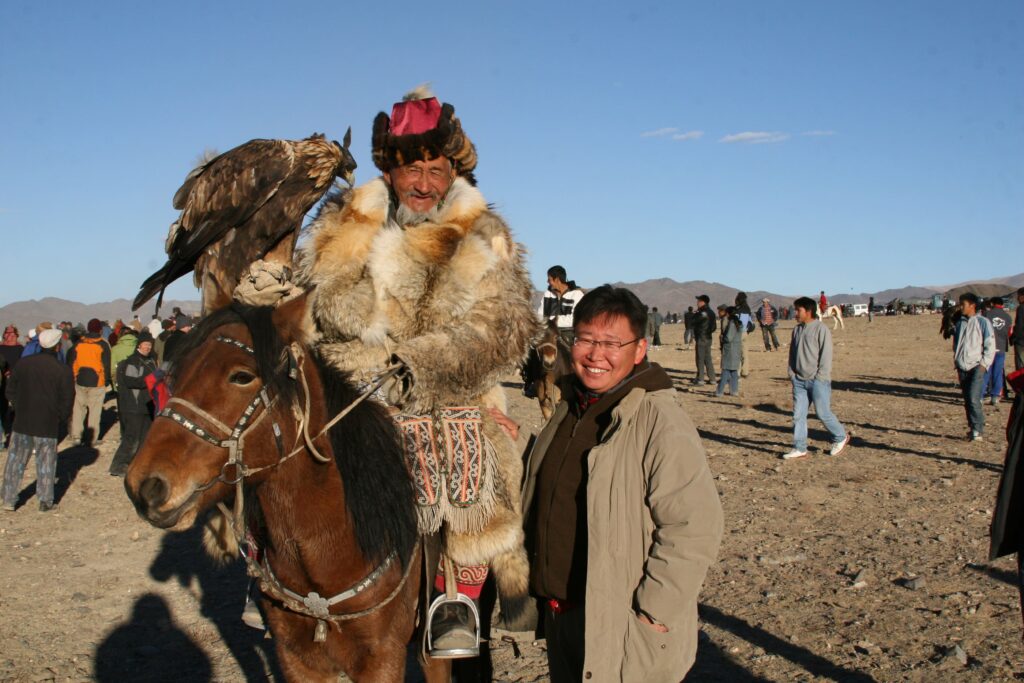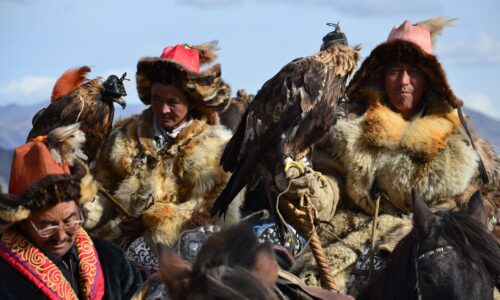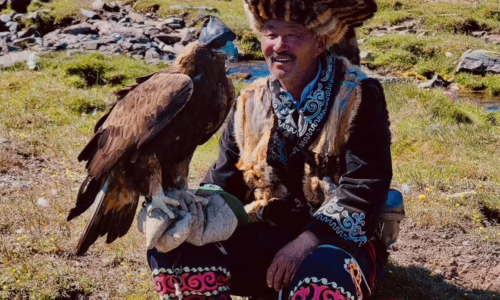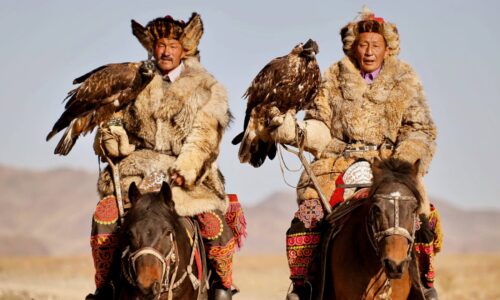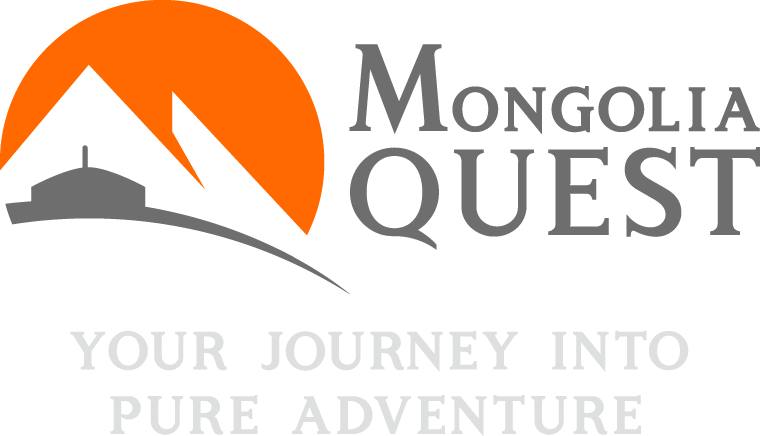THE GENESIS OF THE GOLDEN EAGLE FESTIVAL
In the late 1990s, local efforts to revive Kazakh eagle hunting traditions led to the creation of the Golden Eagle Festival in Mongolia. Driven by a desire to preserve and showcase this ancient practice, which had waned during the socialist era, the festival concept was developed with input from local eagle hunters and supportive community members. Plans were presented to the Bayan-Ulgii Prefectural Assembly, emphasizing the festival’s significance for the Altaic Kazakh community, which makes up approximately 93% of Bayan-Ulgii’s population.
In January 2000, the Assembly approved the proposal, officially establishing the festival as a prefectural event. The inaugural festival took place in October of that year in Bugat Soum, near Ulgii city, with 65 eagle hunters from various regions of the province participating. This event marked a pivotal moment for cultural preservation, allowing eagle hunters to display their skills and sparking renewed interest in the tradition.
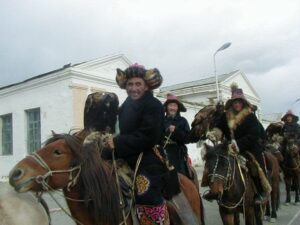
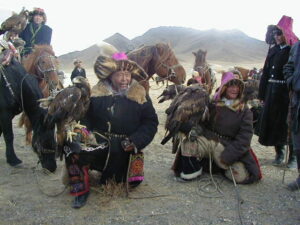
Simultaneously, the formation of the Association of Mongolian Eagle Hunters and the Foundation for Eagle Hunters provided an institutional framework for supporting eagle falconry. These organizations focused on educating hunters about proper training techniques and ensured that cultural knowledge would be passed down to future generations. The association began with the 60 original participants(now over 400) and has since grown significantly, reflecting a resurgence in the practice.
Through continued community collaboration, the festival has evolved into a key event that not only preserves the tradition but also strengthens cultural identity, engaging broader participation from the region while attracting international attention. The initiative’s success has also inspired similar events in remote areas, further expanding opportunities for cultural transmission and local involvement.
MONGOLIA QUEST'S CONTRIBUTION
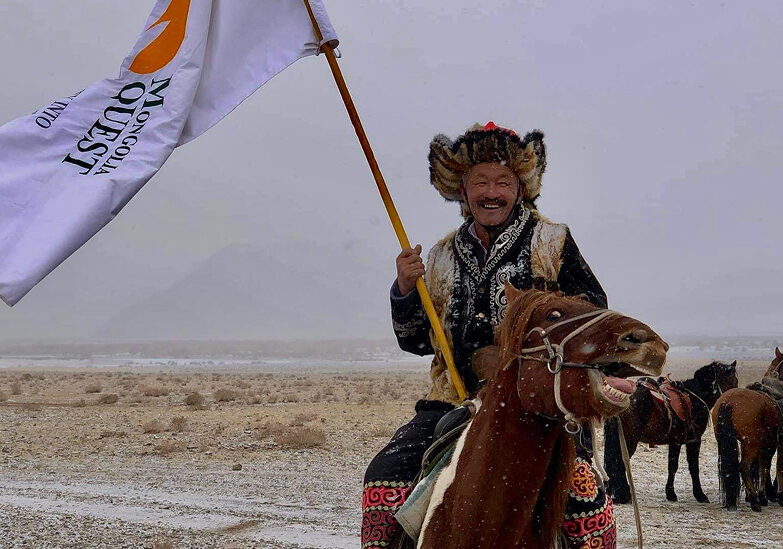
Among the founding members of the Golden Eagle Festival was our CEO Mr. Badral, who played a crucial role in shaping the event. One significant initiative introduced was the idea of awarding the best costumes for both the eagle and its owner. This concept rekindled long-lost traditions, such as crafting hunting equipment using traditional methods and creating old-style costumes. Over time, this emphasis on traditional craftsmanship has led hunters in Altai Sum and other areas to return to these ancient techniques.
Our President, Badral with the oldest hunter participating in the festival
EXPANSION AND EVOLUTION OF THE FESTIVAL
The Golden Eagle Festival’s success in Ulgii has inspired the creation of similar events across multiple sums in the region. For instance, Altai Sum, located 120 km from the provincial center, faced challenges in bringing residents, children, and young people to Ulgii’s festival. In response, the community began organizing its local eagle festival every September, serving dual purposes: offering training to young eagle hunters and facilitating the exchange of experience among seasoned hunters.
Claim your spot at the “The Eagle Festival of Altai Soum” now!
Also, known for its high concentration of resident eagle hunters, Sagsai Soum has hosted its own festival every September since 2018. This small but vibrant festival has become a hub for eagle hunting, with many families passing down the tradition through generations. The Sagsai Festival offers a unique opportunity to immerse yourself deeply in the heritage of Kazakh eagle hunting and witness its enduring legacy firsthand.
Create Your Custom Adventure to Sagsai Soum Today!
This grassroots expansion reflects the growing recognition and value of the tradition throughout the region.
CULTURAL SIGNIFICANCE AND PRESERVATION EFFORTS
The establishment of the Golden Eagle Festival not only reignited interest in falconry but also set the stage for formal preservation efforts. The creation of the Association of Mongolian Eagle Hunters and the Foundation for Eagle Hunters has been instrumental in maintaining the tradition of eagle hunting. These organizations are dedicated to educating younger generations, promoting sustainable practices, and preserving the time-honored techniques passed down through centuries. Through their efforts, the art of eagle hunting continues to thrive and evolve, ensuring its legacy for future generations.

THE ART OF KAZAKH EAGLE FALCONRY
Kazakh eagle hunting, a tradition passed down through generations, remains rooted in the ancient practice of capturing wild eagles rather than breeding them in captivity.
Female Golden Eagles, larger and more adept hunters, are exclusively used due to their superior strength and ability to catch larger prey. Adult females, measuring 66-90 cm in height with a wingspan of up to 234 cm and weighing 5-7 kilograms, are considered the largest of their species, with those in Western Mongolia reputed to be the largest in the country.
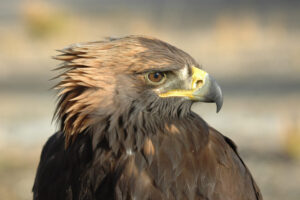
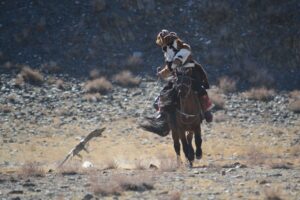
Around late July, hunters seek out young eagles from their nests, timing it just before the birds are ready to leave. Historically, these majestic raptors are kept and trained for five hunting seasons before being released back into the wild—a practice ensuring their return to nature to reproduce and sustain the species.
Kazakh boys traditionally begin training in eagle falconry at around 13, forging a deep connection with their eagles, which can recognize their owners by voice and even footsteps.
The training relies on traditional tools like leg harnesses, saddles, feed bags, and the tomaga, a special blindfold that keeps the eagle calm until hunting begins. Once lifted, the eagle is unleashed with sharp vision and swift agility, showcasing the intricate bond between hunter and bird.
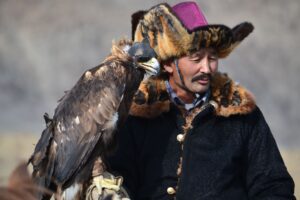
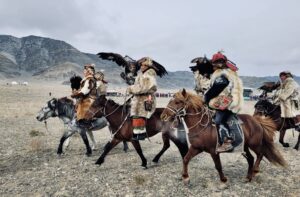
CULTURAL AND ECONOMIC IMPACT
What started as a modest effort to revive a fading tradition has grown into a major event, drawing both local and international attention. Over the years, the Golden Eagle Festival has expanded beyond eagle hunting to include traditional Uriankhai archery, handicraft markets, and cultural performances. The Uriankhai, who make up just over 5% of Bayan-Ulgii’s population(National Statistics Office, Population Residential Regular Census,2020) have preserved many of their nomadic customs, including herding, hunting, and shamanism, despite the pressures of modernization. With their culture at risk, the inclusion of Uriankhai archery, music, and dance in the festival serves as a crucial means of preserving this heritage. Their participation not only highlights their rich traditions but also supports efforts toward sustainable tourism and economic development, ensuring that their culture remains vibrant.
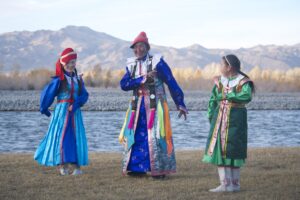
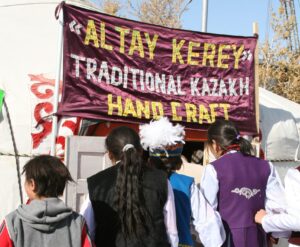
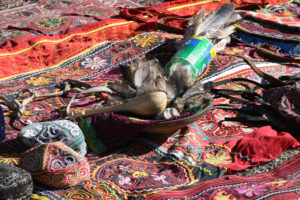
Local handicarft market at The Golden Eagle Festival
These additions not only enhance the festival but also create crucial economic opportunities, particularly for artisans and women in the region. Bayan-Ulgii Province has seen a marked rise in its competitiveness index, improving from 58.1 points in 2013 to 63.5 points in 2023, according to the Economic Policy and Competitiveness Research Center in Mongolia—a testament to the festival’s economic impact.
THE MODERN-DAY GOLDEN EAGLE FESTIVAL
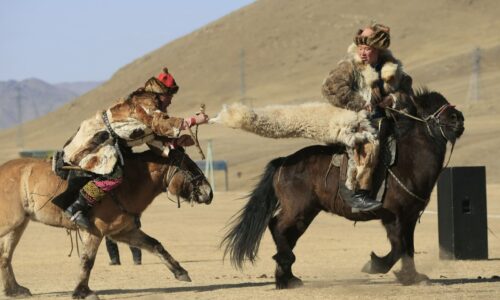
Each year, the event draws around 1,000 foreign visitors, generating over 600 million MNT in direct and indirect revenue for the Mongolian economy.(Source: Monstame Agency) Held annually in October, the festival is a spectacle of skill and tradition, where the bond between hunter and eagle is tested through a series of competitions. Events like calling the eagle from a mountaintop or evaluating its hunting prowess are crowd favorites, showcasing the bird’s speed, precision, and loyalty.
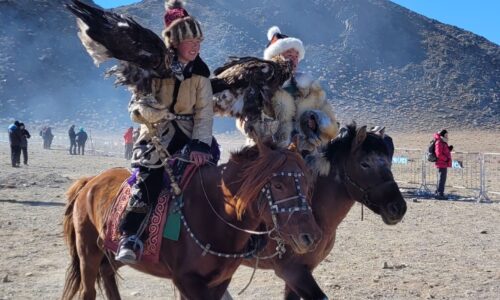
The Mongolian Kazakh community, renowned for their unparalleled skill in eagle hunting, is one of the last groups practicing this ancient tradition. Kazakh eagle falconry, once on the brink of extinction, has experienced a remarkable revival since 2000, largely due to the Golden Eagle Festival. This festival, which celebrates and showcases the art of eagle hunting, has been a central force in revitalizing the tradition and ensuring its continued prominence in modern Mongolia.
